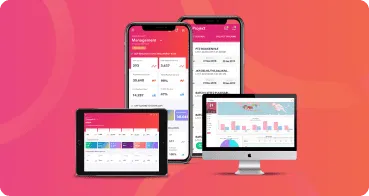Having a Scrum Master who doesn’t master agile values and a Product Owner who frequently interrupts the backlog are two of the other factors that can degrade the quality of your daily scrum.
According to Professional Scrum Trainer Stephanie Ockerman, purpose of daily scrum is to inspect progress towards the Sprint goal to synchronize activities and create a plan for the next 24 hours. Its main mission is to be a common thread between the members of the Development Team to achieve their sprint goals.
The daily scrum is often considered a regular routine meeting and is the simplest scrum event. Even so, this daily scrum also often raises the most errors that can affect the flow of scrum. Starting from members who ignore the principles and values of scrum, make daily scrum as a personal technical meeting, to personal mistakes that can hinder the effectiveness of the daily scrum.
Therefore, Tomps has summarized 12 ways to make daily scrum run more efficiently and effectively for you below.
12 Ways to Improve the Quality of Daily Scrum
1. Explain The Whole Team Clearly About Daily Scrum’s Rules
Talking about rules may sound a little tedious, but you have to do this in Scrum. The Scrum Master must explain the rules that must be obeyed during the meeting, the principles, and each team’s role in the scrum cycle. Why? You may not know that there are team members who do not understand the value and principles of scrum.
Explaining the rules clearly from the start can also save you from various problems in the future. Such as misunderstandings, inappropriate work patterns, to poor productivity. Therefore, make sure your team understands what scrum is and what processes are involved in it. If they already understand their role well, then the practice can run more smoothly.
2. Don’t Be Late, Time is Money
You also need to do a meeting with a fixed schedule. For example, the meeting time is held every day at 8 am. As much as possible, do not change the meeting schedule because it will cause confusion and reduce the team’s readiness to attend the meeting. Also, make sure to complete the daily scrum in just 15-30 minutes so the team can take advantage of their time to complete the backlog.
When it comes to punctuality, you can provide incentives, if necessary, for those who arrive on time and penalties for those who arrive late. Emphasize to the team that attending meetings on time is a form of responsibility and reflects their ethics in the workplace.
3. Begin With Asking “What are we doing?”
Professional Scrum Trainer Russell Miller says there are two important questions to confirm when starting daily scrum. These two questions will lead the team to better results and better problem identification.
First, “What are we doing?”. As mentioned above, the daily scrum is often considered an event of the Development Team only. This often makes other teams lose focus and the value of their contributions when attending meetings. It is also possible for a team to not be aware of the relationship between its performance and other teams. So making sure all teams know what the current progress of the work is and what the ultimate goal is that the team wants to achieve is important. In addition to bringing back the team’s focus, asking this question can also make it easier for you to identify problems like the ones above.
4. Also Ask “Is Any Task We Can’t Complete?”
In addition to the questions above, Miller also recommends that you start the meeting with the question “Is any task we can’t complete?”. This question is often asked in the middle or even at the end of the daily scrum, but asking it at the beginning of the meeting has many benefits. This can help you more quickly identify impediments that arise during a scrum.
If this is asked and the team is not aware of the impact of this impediment, it means that your team is not aware that there is actually work in the sprint that may not be completed. If this can be indicated more quickly, the team can come together to help consider alternatives to getting the job done by dissecting the problem into smaller chunks. If this impediment has been indicated, then you can clearly determine where the focus of the team’s work will go in the future.
5. Avoid Backlog Interrupts
Although the Product Owner can change the backlog if deemed urgent, it is not possible to change the backlog from what has been set in the sprint planning as much as possible. If your scrum team has to tackle tasks beyond the initial sprint backlog, chances are they will fail to deliver product improvements at the end of the sprint.
Once team members are forced to move from task to task, the scrum workflow can be disrupted. The best solution to this problem is to have a Product Owner who is experienced in minimizing disruption and managing the product backlog most efficiently.
6. Determine the Topic of Discussion and Make Priority
When the daily scrum is about to be carried out, you must prepare topics and priority lists that need to be discussed later. The goal is to make the discussion during the meeting focused and directed. As much as possible, focus on discussing values or outcomes that are close to their due date for completion.
Also make sure to cover topics that are universal and don’t appear to be technical reports that only a handful of people understand. Remember, the daily scrum is not a one-by-one report that has to explain the technical details of your current job. Daily scrum is an event where you have to share your work progress information universally so that the whole team understands the overall progress of scrum.
7. How About do Stand-Up Meeting in a Real “Stand-Up”?
Have you ever really stand-up in a stand-up meeting? If not, maybe this method can be tried to improve the quality of your daily scrum. Harvard Business Review reported that those who held stand-up meetings in a standing position experienced a 5.25% increase in creativity and an 8% increase in sense of engagement. Yes, the benefits are not only for health but also for productivity.
Meetings generally have a tendency to be long, boring, and off-topic when done in a comfortable sitting position. Standing up during a meeting can make it shorter, to the point, and take place with high energy remaining. Make sure to only do a daily scrum of about 15-30 minutes per meeting to make sure it’s still efficient!
8. Make “Daily Goals”
The next tip to improve the quality of the daily scrum is to determine the goals that you want to achieve tomorrow. Ideally, record this goal at the end of the daily scrum session. You can create goals that are universally applicable to the entire team or specific to specific teams. Setting goals every day will make the team have a target and focus on what work needs to be done today.
9. As Much as Possible, Never Miss a Meeting
Skipping the daily scrum means missing important information about the team’s current progress. Imagine if it turns out that you want to convey that there are impediments that make a job you cannot complete. This of course cannot be immediately known by the entire team because of your absence, which also affects the speed of completion of the impediments that arise. So, as much as possible never miss the daily scrum, okay!
10. Use the Daily Scrum as a Time to Boost Team Spirit
Really working on a project, we can certainly meet the point of fatigue and saturation. This is where the role of the daily scrum appears to overcome this. In meetings, leave time at the end of the session to simply give words of encouragement and motivation to your team. Moments like this consciously or not can increase the alertness and enthusiasm of the team to complete the project at hand.
11. Use Task Board as Main Communicator
In scrum, the task board is very important. The task board is a medium where all task details, deadlines, task completion reports, to the latest progress status can be seen by the entire team. You can position the task board with labels on it so that all teams understand their workflow. This task board can be used as the main communicator and indicator to show the progress of your project.
In the midst of technological advances, you now no longer need to be bothered in creating a task board manually. With Tomps project management app, you can manage the details of project work from the initiating stage to closing. All details of the work unit, the team in charge, deadline information, reporting of evidence of work, to the completion graph can be loaded directly in Tomps.
Not only in terms of task management and team collaboration, Tomps can also make it easier for you to monitor budget absorption or project cost. All your work would be easier, faster, safer, and transparent with Tomps!
12. Make Sure Your Scrum Master is Experienced
Just as a project cannot run without a project manager, so does Scrum without a Scrum Master. As the name implies, the Scrum Master is responsible for facilitating the use of Scrum in accordance with Agile practices and values, as well as removing barriers that arise.
The Scrum Master exists to help teams understand Scrum theory, practices, rules and values. The Scrum Master is the leader who serves the Scrum Team. The Scrum Master also helps people outside the Scrum Team to understand which interactions are beneficial and which are not beneficial for project performance. The point is, in order to maximize the business value that is processed and generated by the Scrum Team.
Have a vital function, hiring a skilled and experienced Scrum Master is essential to building a productive Scrum team workflow. Without a skilled Scrum Master, it is difficult to ensure the team is disciplined in the values and practices of scrum.
Those are 12 tips to improve the quality of your daily scrum in order to successfully achieve the desired scrum goal. Be sure to share this information to your Scrum Team!
Always update the latest information about project management here with Tomps.id, your project management solution!







